Category: Family Stories
Walking the Path of PFD
Published by Jaclyn Pederson, MHI on Oct 19, 2023
October holds a special place in my heart. Professionally, it’s the birthdate of the pediatric feeding disorder (PFD) diagnosis in the US (PFD turned two this year!). And personally, it’s the birth month of my two young sons.
While Feeding Matters was the birthplace of PFD, we do not own it. It’s amazing to see how the professional and parent community have taken it and run. And while we do not own PFD, we do serve as PFD’s champions, advocates, and storytellers. We feel an immense responsibility to walk alongside any family during their feeding journey while also improving the system to make that walk a little easier.
Research confirms what families tell us: they tend to find a way to navigate life during and after the initial throes of feeding challenges in the early months of their child’s life. They are shown to hold it together, so to speak, through formula switches, bottle changes, seemingly endless appointments, tubes or no tubes, medications, and more. But something happens around their child’s first birthday. Whether it’s an anxiety filled smash cake session or figuring out how to reduce bottle feeds, a sobering reality often hits families on their PFD journey at this typically joyous milestone.
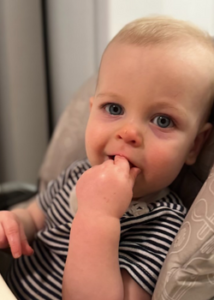 And this is something I’m keeping in mind as my son George turns one later this month. After 10 years of fighting tirelessly for PFD families, I find myself asking the same questions I’ve listened to other families ask. This last year with my sweet George, my family has navigated an atypical feeding experience. After many bottle and formula switches, tears, and anxiety as we worked through George’s reactions, we introduced solids timidly, with only some success. Now we’re coming up on George’s first birthday.
And this is something I’m keeping in mind as my son George turns one later this month. After 10 years of fighting tirelessly for PFD families, I find myself asking the same questions I’ve listened to other families ask. This last year with my sweet George, my family has navigated an atypical feeding experience. After many bottle and formula switches, tears, and anxiety as we worked through George’s reactions, we introduced solids timidly, with only some success. Now we’re coming up on George’s first birthday.
I don’t know what’s next in November or the months to follow for us. I do know the various paths I’ve seen families go down. I am grateful that we were fortunate to have many resources and early intervention for George. But, I’m keeping every Feeding Matters family on my mind as I walk this road, especially those who don’t have the resources I was fortunate to have. It’s a responsibility I carry for my son, for your family, and for all the professionals who work to give our kids the best care they can.
While every PFD journey is different, I hold this research close to me and will take comfort that I walk on the same path as so many other parents who have come before me and hope it helps me forge a new one for those who come after me.
All the best,
Jaclyn Pederson, MHI
Feeding Matters CEO

References
Estrem, H., Knafl, K., Thompson, K., & Thoyre, S. (2023, June). Revealing the Complexity of Family Response to Infant Feeding Challenges. Podium presentation at the 16th International Family Nursing Conference, Dublin, Ireland 2023.
Thoyre, S., Knafl, K., Estrem, H., Thompson, K., Cromeens, M. G., & Park, J. (2023, June). How parents of developmentally at-risk infants define “successful feeding” at 1, 6, and 12 months of age. Podium presentation at the 16th International Family Nursing Conference, Dublin, Ireland 2023.
Estrem, H. H., Thoyre, S. M., Knafl, K. A., Pados, B. F., & Van Riper, M. (2018). “It’s a long-term process”: Description of daily family life when a child has a feeding disorder. Journal of Pediatric Health Care, 32(4), 340-347. https://doi.org/10.1016/j.pedhc.2017.12.002
Overturning insurance denials for PFD
Published by Feeding Matters on Sep 20, 2023
Navigating insurance coverage for pediatric feeding disorder (PFD) exacerbates the challenges of dealing with a complex medical diagnosis. The ICD-10 code that made PFD an official diagnosis meant getting the green light from insurance is significantly more straightforward today. But many families still face insurance denials.
Anyone who’s ever spent time on hold with an insurance call center or repeated a medical story multiple times to different agents knows how frustrating these calls are. Managing insurance bureaucracy while parenting a child with PFD is exhausting.
Stages of overwhelm are typical for families of children with PFD. Parents of young children in general are often sleep-deprived and stretched thin while balancing parenthood, work and life. Add multiple clinical appointments and round-the-clock feeding sessions to the mix, and it’s no wonder PFD parents are stressed.
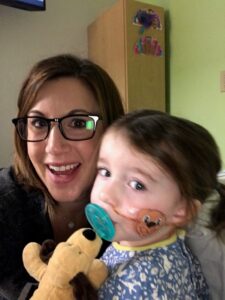
How one mom overturned an insurance appeal to for an important treatment
Emily Adams, mother of 6-year-old Morgan and a long-time insurance insider with USI, shares how she battled insurance denials and offers tips for other families.
Morgan had severe reflux as a baby and only ate from a bottle in her sleep. Despite “dream-feeding” all night, she continued to lose weight. At 1.5 she got an NG tube to get the nutrition she needed.
Eventually, Morgan’s reflux improved with the proper medication. Emily then searched for a feeding program that would repair her toddler’s relationship with food. Finding the perfect program at Nationwide Children’s in Columbus, Ohio and securing a spot there was a feat of its own. Getting insurance to pay for it proved just as challenging.
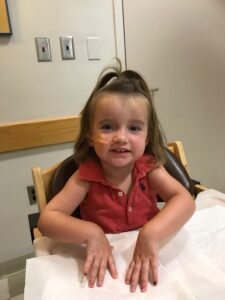
Morgan at that point didn’t have an official diagnosis because the ICD 10 code was not yet established. Clinicians had to get creative with billing codes for Morgan’s therapy sessions. It wasn’t unusual for United Healthcare to deny them. That meant Emily was used to appealing denials by figuring out what code to use and then having Morgan’s clinicians resubmit them.
This came to a head one Monday morning when Emily and Morgan prepared to temporarily move to Columbus to enroll in Nationwide Children’s outpatient feeding program. There was a two-year waitlist for the spot. It was then that the family learned their insurance wouldn’t preauthorize coverage.
Emily, who works in the insurance industry, managed to identify the insurance broker for her husband’s employer. Emily knew she recommended that the insurance agency deny their claim. She reached out and realized the broker assumed the cost would be exorbitant and the need wasn’t great. “Nobody has any idea what the expense is for each of these children because they all need different types of care at different stages,” she says.
Emily explained that the cost of not covering the program would be much higher if Morgan continued to need an NG tube and years of therapy. She convinced the broker to recommend the approval. “It was very last minute and very stressful. I’m in the industry and know how the game is played, so it was extra frustrating to see this happening to my kid,” she says.

6 tips for insurance appeals
Emily recommends the following tips for navigating insurance denials.
1. Be a fierce advocate for your family and child. When the insurance company denies coverage, insist that you’re not accepting no as an answer.
2. Speak to different people. Talk to your employer’s human resources department to find out how to reach the company broker. Explain to them about the treatment and the cost exposure. They may assume that the costs to treat your child are much more than they are. Present a budget of what your kid needs and what the expenses are.
3. Have a peer buddy who’s navigated this before.
4. Let a family member or friend go to important appointments with you. “In fight or flight mode, you’re not thinking clearly. You may not recognize the whole picture and miss a big piece of information,” says Emily.
5. Take detailed notes. “We hear things differently when we’re in stressful situations,” says Emily. A notebook to refer back to meant she could better advocate for her daughter.
6. Lean on your provider to help you advocate for coverage. Many hospitals have a patient advocate or liaison to help families navigate benefits and the appeal process.

When calling your insurance company, here’s a sample conversation Emily recommends using:
I know you don’t understand the complexities of my child’s condition. She needs speech and language pathology, occupational therapy, feeding therapy with a dietitian, pediatric psychologists and nurse practitioners to deal with this illness. Delaying care can delay my child’s progress and make it more expensive.
I need your help getting me to someone who can help all those codes appropriately process. Can you connect me to someone who has a better understanding of billing for complex conditions?
I’ll stay on the phone until you figure this out.
Navigating insurance for a child with PFD is frustrating, but it’s not impossible. Like so much of parenting, says Emily, “You have to be a fierce mama bear, talk to different people and make someone listen to you.”
Click here to download more information about your right to appeal an insurance denial and access a sample appeal letter template for PFD.
Back to school with PFD: Tips for the new school year from preschool to high school and beyond
Published by Feeding Matters on Aug 16, 2023
When you spend hours every day feeding your child and running to therapy and medical appointments, starting school can seem daunting. Whether it’s at age 3 or later, there comes a time when your child is ready to head to school.
We asked three women experienced with different school stages for children through young adults with pediatric feeding disorder (PFD) to offer advice. Following are their stories and advice.

Transitioning to preschool with PFD
At the age of 2.5, when most toddlers’ parents are thinking about starting preschool, Liz Wiseman Smith was busy with too many hospital stays to count. Still, helping her daughter, Zoe, reach age-appropriate milestones as best she could was a priority.
Zoe was born prematurely with heterotaxy syndrome, which occurs when the heart and other organs are in the wrong place in the chest and abdomen. Before the age of two, she had five cardiac surgeries. Reflux from gastroesophageal reflux disease (GERD) meant that she needed a gastrojejunostomy tube (GJ-tube) that allowed her to eat through her intestine.
Health complications meant Zoe had just begun walking six months before school and communicated through sign language. Despite all she’d been through, the family was determined to help Zoe thrive.
“Our goal was trying to get her caught up as quickly as we could, but there was a lot to focus on,” says Liz.
Set up a communication plan
In Massachusetts, Liz was accustomed to a robust early intervention program where clinicians came to her home and left details from every session. Starting preschool meant figuring out how to transition from this open communication model to public school special education, which wasn’t likely to meet that same level.
Liz took it upon herself to initiate communication and found her daughter’s school was responsive. Zoe’s preschool teacher even developed a communication plan using a notebook, which the nurse updated.
Be sure your child’s school has the nursing staff you need – and a plan for substitutes
For kids with complex feeding issues, especially with feeding tubes, the school nurse is an integral component to successfully transitioning to a new school. This means connecting with the nurse before school and also ensuring the school has a plan for any days when the nurse might be absent. For Zoe, this meant she started school three weeks late because her school initially couldn’t find a nurse.

Transitioning to elementary school with PFD
Yomi Ogedegbe’s son, Joshua, is seven and beginning third grade. Although he is on the autism spectrum, he wasn’t diagnosed until age 4. He struggled with feeding since beginning solids, eating mostly a pureed diet, but only recently was diagnosed with oral dysphagia.
Having specific diagnoses has been key to accessing therapy services in and outside of school with insurance coverage.
Navigating her son’s autism and pediatric feeding disorder has meant that Yomi has learned valuable lessons about making the most of education and services in school.
Make your child’s IEP as detailed as possible
Yomi considers parents a key partner in developing her child’s Individualized Education Plan (IEP). Rather than leaving it to Joshua’s team of therapists, she did a lot of research to figure out what to include in the documentation. “If there are things that you think will be helpful, research to get the information so that when you ask for something, it’s backed by evidence,” says Yomi.
Be your child’s advocate
Just because something is written in your child’s IEP, doesn’t mean it’s necessarily followed all the time. Yomi says she regularly looks at Joshua’s IEP and calls to check with his case manager. “When they know you’re regularly keeping track of everything that’s supposed to be done, there’s more incentive to do what they’re supposed to,” says Yomi.
Ensure continuity of care
When your child receives therapy services, connecting the school team with outside therapists is important. For example, Joshua spent a month in an intensive feeding therapy program. Yomi connected her son’s school speech therapist to the feeding program team so that she could get trained on how to continue supporting Joshua’s feeding goals.

Transitioning to teen years and beyond with PFD
When Dana Kizer, MS, OTR/L was in school with her brother, Sean, who is medically complex, there were times when she would have to step in to support him. Once when Sean was more sensitive to touch and getting wet or messy, Dana saw him accidentally spill his lunch tray and had to run over to keep him from taking off his clothes in the school cafeteria.
Today, Dana is an occupational therapist, and her brother works part-time at Barnes & Noble. Thanks to feeding therapy support, Sean can enjoy a variety of foods and textures with safe oral motor skills. Still, he does sometimes need cues for pace and bite size.
As an OT and a sibling who continues to help out, Dana offers some tips for transitioning to high school and beyond.
Not every time can be therapy time
In times of stress, transitions and routine changes, it might be important to lean on comfort foods. For example, when Dana’s family went on a cruise, Sean would only eat chicken tenders by the pool. Out of his normal routine, it took a few days to adjust and for his anxiety to decrease. After a few days, Sean could eat a variety of foods without it being forced or stressful. “What we learned as a family is that we’re not always in therapy mode,” says Dana.
Focus on episodes of care
Transitioning to high school, college or a new job might mean your child with PFD needs what Dana calls short bursts of therapy focusing on a few goals. As an occupational therapist, many clients will see her in the summer to prepare for increased independence before a transition. This is especially important for teens and young adults who need new, age-appropriate regulating methods. “They might plateau in feeding therapy or take a break, but they return when their maturity level increases and they’re ready to be more independent.”
Having a child with PFD at any age means constantly adapting and learning. Getting support from those who have been through the journey before makes these transitions a lot easier.
This blog was adapted from a panel at the International Pediatric Feeding Conference. All three parents are members of the Feeding Matters parent advisory board.
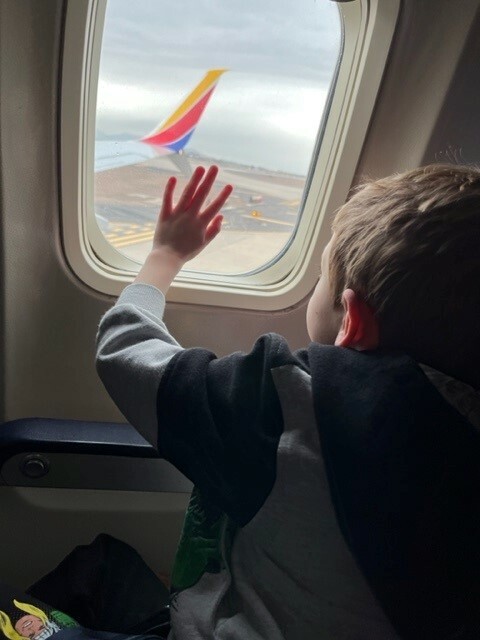
Hoping for Magic
Published by Anna Taylor on Aug 07, 2023
I didn’t fly to Orange County for the magic of Disney. I flew there in hopes of a magic feeding therapy wand. The truth is, when your child has pediatric feeding disorder (PFD), there’s no such thing as a magic wand. Since 10 months old, we’ve tried various feeding therapists, different approaches, different foods, what feels like everything to get Levi to eat. I’m thankful that he doesn’t have a tube and he takes his calories orally, but I still wish for magic. He will drink only vanilla flavored formula, from a specific cup. He will lick a lollipop, play with food, and take some sips of danimals yogurt smoothies. All of that took over 3 years of slow progress in feeding therapy.
They don’t tell moms about this. There is no instruction manual given out when you have a baby that says, “Hey, your kid might not eat food.” And yes, I am lucky, I know I am lucky. I could be visiting children’s hospitals for much darker challenges; for that I’m immensely grateful. Yet still, I wish for magic. We are coming up on his 4th birthday and I’ve never seen my son eat a birthday cake. I would give him ice cream and cake for every meal, if only he would just eat something… anything.
The trip to Orange County didn’t result in a magic wand. He’s not yet ready for a more intensive therapy program and so we will wait and we will move forward and we will hope. Wait to see if he’s ready in the future, move forward with the current therapists and efforts that have gotten us to the point we are today, hope that one day he will lick the frosting off his birthday cake and maybe even take a bite.
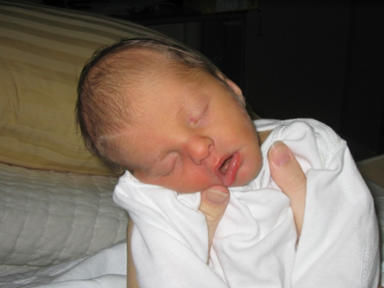
A mother’s journey with PFD shines a light on research
Published by By Hayley Estrem, PhD, RN, Assistant professor at UNCW on Jul 21, 2023
I clearly remember the day a doctor’s news changed my life. After months of chasing my baby around with a bottle to eat an ounce at a time, I learned Alex has a rare chromosome disorder.
The neurologist enthusiastically delivered the devastating news, charmed that he was the first to solve the puzzle of why Alex’s development was delayed. Even as a registered nurse, I found his explanation confusing. My shock meant I couldn’t have processed the information even if it had been simple.
How NOT to support families with pediatric feeding disorder
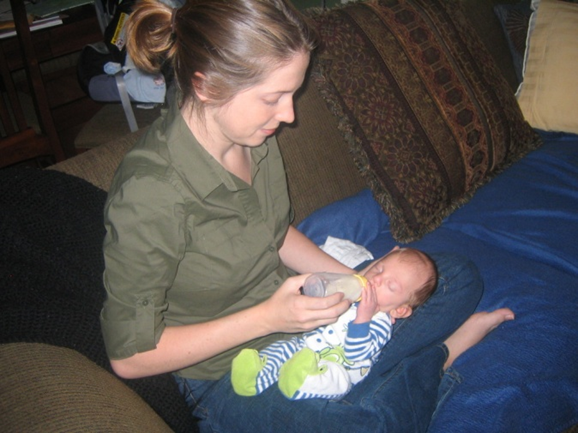
As a healthcare professional, that day was one of many where I learned how not to support a family of children with pediatric feeding disorder (PFD). The news should have come from a genetic counselor, my husband should have been there, and it should have been shared with compassion.
The journey before learning about Alex’s disorder was a struggle as well. Although he was my first, I knew it wasn’t normal for a newborn to eat only an ounce at a time. What he took in, he spat up. His growth was slow, and at 9 months, he was neither sitting up nor crawling.
Our pediatrician told us to give it time, that I was a nervous new mom and that Alex was slow to grow because it was a difficult pregnancy, and he would catch-up. It wasn’t until we saw a different provider at 9 months that we were connected to a neurologist, geneticist and Early Intervention (EI) services. This too, was a lesson in how not to support families of children with PFD.
Armed with a diagnosis and therapy services, we hoped to help Alex eat more and get the calories he needed to grow and develop. Instead, we were told to try harder to feed him and to schedule weekly weigh-ins. A feeding tube was held over our heads like a threat, as if inserting one would signal our failure as parents.
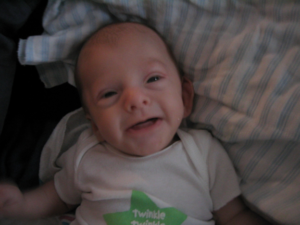
By the time Alex was 18 months and weighing only 16 pounds, I nearly begged for a G-tube. When he finally got one and started gaining weight, I couldn’t help but wonder why we were encouraged to try so hard. Why didn’t he have the nutrition he needed during such a critical developmental time?
Alex’s genetic diagnosis and the PFD that came with it became a springboard for my career. I had a choice to struggle with the question, “Why me?” or do something that would make this odyssey less painful for others.
I chose the latter.
Leading research to support families of children with PFD
After completing a master’s degree in nursing education and then a doctorate in nursing, today I research PFD and how it affects the entire family unit. I’m dedicated to fixing what we went through for others.
At the beginning of Alex’s diagnosis 15 years ago, there wasn’t common terminology among physicians and clinicians. This was a focus for my dissertation because it is a big barrier to building research and supporting families of children with PFD.
It’s why I have a big affinity for Feeding Matters, who did the work to get a PFD ICD-10 diagnosis.
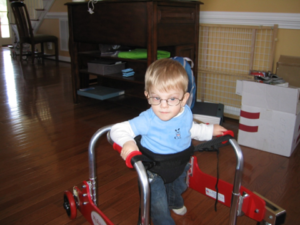
One of the things I’ve done with our Feeding Flock Team is to develop several parent questionnaires about feeding behavior, skill, family management of feeding, and parent and family impact of feeding. For example, on a project with researchers and clinicians at Children’s Hospital of Atlanta, we are developing an assessment of the impact of intense food allergy regiments on caregivers and households.
Our goal is to provide data to clinicians and parents to help determine whether a food allergy intervention eases the psychosocial impact that food allergy has on everyday life for parents and families. For example, new oral immunotherapy treatments for food allergies require children to take a certain amount of allergenic food and have activity restrictions every day at a specific time. Is the cost-benefit worth it? Ultimately, the child still needs to avoid the food, but should have less severe reactions if exposed to small amounts unintentionally. Are there quality of life improvements for the family? We only know if we measure this.
I’ve interviewed parents as I go through the process of developing measurement tools for PFD, and I’ve heard their stories. Witnessing what others go through and being in the position to do something about it is what gives our family’s struggle meaning.
Because of our experience with feeding therapies, I learned to ask more questions. And I learned that research for PFD must be patient-centered. Only with patients who have experienced PFD and their families at the helm can research lead to better journeys and improved outcomes for the whole family.
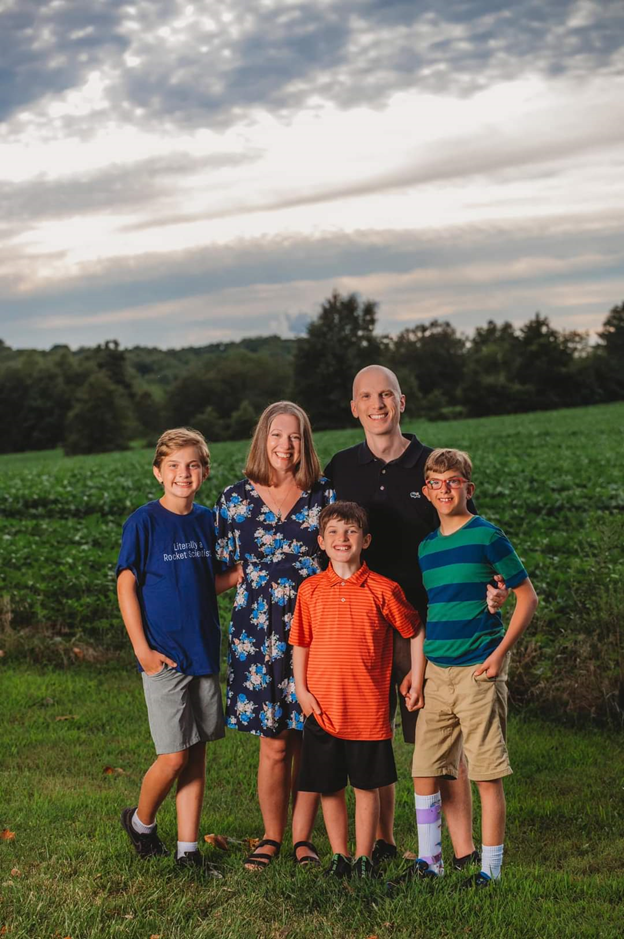

Supporting Parents: You are not alone
Published by Erin, Parent and Family Coach on Jul 19, 2023
It’s an experience many women have: first, miscarriages. Then, joyfully, delicately, pregnant again. Then, complications throughout the pregnancy. The emotions are overwhelming every moment of every day for months. Then, you hear your baby cry– the best sound in the world because it means he’s alive, healthy, perfect. However, in our case, things weren’t perfect. Everything wasn’t ok.
Within the first few months of his life, my son was diagnosed with failure to thrive. No doctor could explain what was causing him not to thrive. I felt like our doctor was putting so much pressure on my son to gain weight that it was causing my son to throw up. It was just too much for him, and for me. My son seemed to be thriving, joyful in all things, except for eating. was thriving in everything but not with eating. He hated everything involving eating and weighing.
I felt like I was failing as a parent and no doctor was noticing or validating just how hard I worked to feed my son. I cried a lot. I felt alone, and I started getting really depressed. I had no one telling me I was a good mom, I had no one I could relate to, and I felt so alone and isolated. I left my job to focus on taking care of my son, making me even more isolated, and forcing my husband to work six days a week to make up for the income we were losing. I felt like I was horrible parent, a failure. I continued pushing doctors for a diagnosis but I did not get one until my son was 2.5 years old. My son was diagnosed with having delayed gastric emptying. 912 days of his life was spent in discomfort, fear, and anxiety. This should not have been…
After the diagnosis, I knew I needed help, and I knew that someone had to be going through something similar. I went searching online for a support group and came across Feeding Matters. Within a few minutes I had requested a family coach / mentor. I was quickly matched with Amber and from the moment we connected it was a game changer for me mentally and physically. Amber reminded me I wasn’t alone, I had someone validating my feelings, and Amber let me know I was a good mom.
Not many people talk about pediatric feeding disorders, and it’s rare to find another child going through this in your normal day to day life. Amber reminded me that I have a story to tell and because of that, I became a family coach to support other families who are going through this as well. Unless you are going through it, you really don’t realize the impact and support feeding matters offers. This has been a lifesaver for me to have a family coach / mentor.

The Power of Two: Ishan’s Story
Published by Karen Ellis, Mom to Ishan on
When my son, Ishan, was initially hospitalized for aspiration pneumonia, failure to thrive, and feeding intolerance, an NG tube was placed. I felt so defeated. I felt terrified. I felt anger. I felt overwhelmed.
I watched my infant son struggle in the hospital to breathe, to eat. I thought perhaps since we were being seen at the children’s hospital, I would get the social support I needed– to feel seen, to get connected to resources like a new childcare option now that the NG tube made it impossible for Ishan to return to full time daycare, and to navigate this new world, but like too many families, that wasn’t my experience.
I was so isolated. Family and friends who expressed their desire to help, didn’t know how. I didn’t have the capacity to tell them how. I was consumed with keeping my son eating, keeping him breathing. Well-meaning family and friends didn’t understand my son’s health issues. It felt like they didn’t care. When the NG tube was placed, people thought he was ‘better’ and any offers of support seemed to stop altogether.
Desperate, I started looking online for support groups and I found Feeding Matters. I requested to be a part of mentorship pairing through their Power of Two program. I was paired with a parent mentor who had ‘walked in my shoes’ with their own child’s with feeding issues. The first time Leilani called, I was a wreck, but her positive and understanding energy was everything to me. She reminded me to recognize the tiny moments I was grateful for. She told me to celebrate every little positive step, to laugh at every laughable moment. I was so burned out but her encouragement and experience helped me to change in small ways and become the mom and healer my son needed me to be.
We left the hospital with the NG tube and began feeding therapy once we got home. Months later, I am happy to share that we are getting ready to wean Ishan from the NG tube. I regularly call and text Leilani with updates, questions, and ask about how her son is doing. It’s heartening to see a parent further in their journey with pediatric feeding disorder, to see that life moves forward and progress can be made.
Ishan is my whole world. He is a fighter. He is a joy. Despite having approximately 20 different diagnoses related to feeding, he is eating orally and enjoying exploring food. I am thankful for every day, every meal, every moment with my boy.
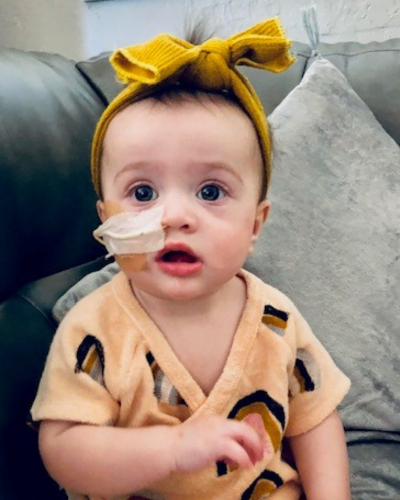
Pediatric Feeding Disorder to ARFID: A Young Child’s Journey
Published by Feeding Matters on Jun 26, 2023
Not long after Alexandra Marcy’s third child was born, she knew something was wrong with her eating. From the start, her daughter, Emerson, wasn’t latching properly. “I was told at the hospital that her latching would come naturally. We tried for a few days, and I knew it wasn’t normal,” she says.
It wasn’t long before Emerson’s diapers were dry.
A doula friend suggested Emerson might have a tongue tie, making it hard for her to latch. Not only did she indeed have a tongue tie, but she also had a lip tie and a buccal tie – a cheek tie that results from an abnormally tight frenum. Emerson underwent a laser procedure on all three, and Alexandra started using a nipple shield while breastfeeding.
Even then, says Alexandra, “She’d get a little bit of milk but never enough. Any time I tried to nurse her, she’d scream.”
Those early feedings began a four-year feeding journey that’s still developing today. What began as a medical feeding issue then is today a psychological issue. The Marcy family continues to navigate the uncertain path between pediatric feeding disorder (PFD) and Avoidant Restrictive Food Intake Disorder (ARFID).
Click here to read about PFD and ARFID and how the two diagnoses can overlap.
See here why misdiagnosing PFD and ARFID can do more harm than good.
Following is their story.
One young child’s journey from PFD to ARFID
Alexandra gave up on breastfeeding early and instead pumped milk for Emerson. The baby never took more than an ounce at a time. Even then, Emerson would spill milk out of her mouth and gag. Like many parents of children with PFD, Alexandra spent most of her time around the clock pumping and feeding her daughter.
Emerson also sounded congested all the time. Her pediatrician assured Alexandra this was normal.
Alexandra wasn’t convinced, and at three months, baby Emerson was breathing strangely and seemed limp. It was RSV season, but a swab and an X-ray seemed fine. But Emerson hadn’t gained weight since her previous pediatric appointment. When Alexandra returned a week later for a weigh-in, the baby lost a few ounces. The pediatrician recommended Alexandra supplement with formula. He suggested her breast milk wasn’t fatty enough. Emerson lost more weight even with formula.
They ended up at Phoenix Children’s Hospital (PCH) when Emerson was four months old. “I saw so many doctors, who all thought her breathing and eating will be fine. We were there for over a week without any answers,” says Alexandra.
It wasn’t until Alexandra, who worked in a therapy clinic, managed to connect with a feeding therapist from her team that she got some answers. She looked over Emerson’s original X-ray of her lungs from when Alexandra suspected she had RSV and saw shadows in the image. A second X-ray showed the shadowing had gotten worse since then. This was a sign the baby was aspirating.
The family turned to a gastrointestinal doctor for answers. Emerson was diagnosed with allergies and started an animos-based formula, which helped. “Still, though, she was a terrible eater. It was hard to get 4-oz. into her,” says Alexandra.
It seemed like any time Emerson would make some feeding progress with her feeding therapist, she would get an upper respiratory infection or rotavirus that would set her back.
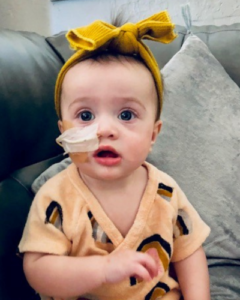
Emerson got an NG tube to build up her strength. The NG tube helped the baby gain weight, but Alexandra still remembers it as traumatic. “Any time it came out, I’d have to have my eight-year-old hold her down while I put it back in her. It felt crazy and sad.”
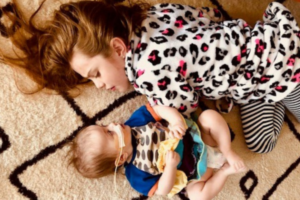
Eventually, Emerson was diagnosed with:
Type 2 laryngeal cleft: An abnormal opening between her larynx and the esophagus that allowed food to enter her lungs
Tracheobronchomalacia: Her weak tracheal or bronchial tubes would collapse any time she ate or cried.
Dysphagia
“Finally, we had answers, but no way to fix it,” says Alexandra.
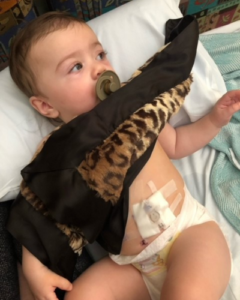
At eight months, Emerson transitioned to a G-tube as a long-term feeding solution. “This was so much better because I could see her beautiful face. She wasn’t gagging and throwing up,” says Alexandra.
The G-tube even helped Emerson overcome some food aversions to try solids. Alexandra added her to the months-long waiting list to get into the feeding program at PCH.
Thanks to the family’s hard work, Emerson progressed and eventually got into the feeding program. But at age three, she started to regress again. She stopped eating most of what her parents offered, accepting only four foods.
Even after three weeks in an intensive feeding therapy program at PCH, Emerson wasn’t progressing. At that point, all her medical issues had been addressed and resolved.
The hospital team suggested Emerson see a psychologist, who thought the three-year-old could have ARFID. Eventually, Emerson was diagnosed with ARFID and obsessive-compulsive disorder (OCD). She was young for both psychological diagnoses, but a child psychologist and a child psychiatrist agreed.
Emerson was treated with EMDR therapy to help her reprocess the medical trauma she experienced as a baby and toddler. “Any time she eats, she doesn’t want to feel pain, so this makes her restrictive and gives her intrusive OCD thoughts,” says Alexandra.
A psychiatrist who has worked with many children with PFD and ARFID prescribed medication, helping Emerson be more open to new foods and eat more. Things have gotten easier, but still, says Alexandra, their journey isn’t over. “She just doesn’t care about food. She doesn’t act hungry, and I have to remind her to eat.”
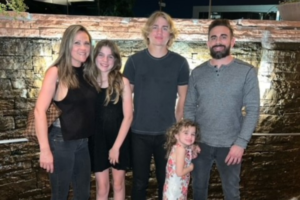
Alexandra hopes sharing her family’s story will help others navigate a similar path.
For more information, visit Feeding Matters’ resource page: PFD and ARFID. If you are a parent needing support, check out our family support resources .
Bravely adventuring out with PFD this summer
Published by Feeding Matters on Jun 23, 2023
Parents offer 7 tips for navigating summer travel with pediatric feeding disorder
Summer travel with children is always an adventure. Having a child with pediatric feeding disorder (PFD) makes traveling for leisure or medical reasons more complicated. Planning and adhering to advice from seasoned families of children with PFD can help smooth out any bumps in the road.
Julie Boos of Kansas City navigated PFD with her son, Landon, for the first eight years of his life. Landon suffered from respiratory syncytial virus (RSV) at eight days old and underwent respiratory failure. That led to dysphagia and other eating and breathing issues.
The family’s lives revolved around physician and therapy visits. Just visiting the hospital took foresight, perfect timing and a car bottle warmer.
But, the Boos were determined to visit Disney World. They had planned to go when their older daughter was three, but they delayed the trip when Julie was pregnant and told not to travel. Their daughter was already spending most of her time outside school tagging along on medical visits, so the trip felt essential.
They delayed the adventure until Landon was just under three and still qualified for a free ticket. Julie planned every detail down to the minute. She requested a free refrigerator in the room, citing medical issues. When they arrived, she ordered groceries of Landon’s few foods to the room. And she studied the Disney restaurant menus to find those who might serve elbow pasta with butter. She mapped out the day so they’d end up at the right restaurants at the right time.
Anyone with a child who has PFD can relate to the challenges the Boos faced, along with the sheer will to overcome it to offer their kids an experience others consider “normal.”

Tips to ease traveling with PFD
We asked parents in our Feeding Matters Power of Two Facebook group for their tips on traveling with PFD. Whether it’s a day’s outing at the pool or a week at Disney, here are seven tips to make your family fun this summer easier.
Pack feeding essentials in your carry-on
If your child has a g-tube, specific bottles or any feeding supplies, bring them in your carry-on and have a backup. Andrea Wallace says she always travels with a backup button and extra supplies for her child’s feeding tube. That way, she’s always prepared when flying if the checked bags get lost or delayed.
Use a pump backpack
Having a pump backpack has been essential for Jackie Moore’s daughter. They use it for night feeds, and it also makes traveling easier. The bag has space for ice packs to keep the formula cold for multiple feedings. Moore suggests this Feeding tube backpack.
Try a travel booster diaper bag
With so many feeding supplies in addition to all the other kids’ travel needs, any way to consolidate travel gear makes trips easier. Moore swapped out her diaper bag with a travel booster that has storage in it. “My daughter is very particular about what she will sit in because of sensory issues, and she loves this booster. We downsized much of the stuff in her diaper bag and attached a cold lunch bag to the strap,” she says. This is the travel booster diaper bag Moore uses.

Get a travel mini fridge
An AC and DC-powered mini fridge for travel can be a lifesaver in the car, according to Devon Steele. It guarantees you can refrigerate formula and purees. It has dual power sources that can connect to your car or to a wall outlet. “Just make sure your hotels have elevators, or you have help getting it upstairs,” she says. View the BougeRV car fridge recommended by Steele.
Lean on food deliveries or family and friends
Most kids are tired and cranky when they finally arrive at a travel destination. Having food delivered beforehand or asking your hosts to get your child’s favorite foods can make for an easier start to the vacation, says Erin Avilez.
Document what works
With so much to plan, it’s easy to forget something on your next trip. Julie Boos recommends writing down what worked (and what didn’t). You can even have a travel bag prepared that you can use for every trip. This is especially helpful for those who have to travel for frequent medical trips.
Have a backup plan
Despite all her advanced planning, Julie Boos and family got stuck in the Atlanta airport when their plane was canceled. If you know your child won’t eat anything from a food court, make sure you have food prepared just in case you don’t make it home when you expect.
Happy travels!
.Have tips of your own? We’d love to hear from you. Email programs@feedingmatters.org.
Comfort that comes from community: Parents find support for PFD from peers who experienced it
Published by Feeding Matters on May 19, 2023
Despite the joy that comes with parenting, it can also feel incredibly lonesome. That journey is even more isolating for parents of children with pediatric feeding disorder (PFD) who don’t follow the typical feeding and developmental trajectory.
That’s what makes Power of Two, Feeding Matters’ matchmaking program to support parents with one-on-one mentors, so vital. Having a friend to call, text or video conference away makes parenting a child with PFD much less isolating and a bit easier. Paula Benzing, a mom of three in Mesa, Arizona who has two children with PFD, says, “When I was struggling with feeling alone, it helped so much to talk to a coach who understood what I was going through and could just listen to me vent and air my frustrations.”
 There are three main goals for Power of Two:
There are three main goals for Power of Two:
- Decrease feelings of isolation that can come with a PFD diagnosis.
- Give confidence back to parents who know their children best.
- Offer education through every step of the journey.
Power of Two launched over a decade ago as an integral part of why Feeding Matter exists. The program informally began with Feeding Matters founder Shannon Goldwater and former CEO Chris Linn when they realized their children had the same provider, GI and feeding therapist. Their mutual support was a balm in the chaos of navigating feeding issues. When Shannon launched Feeding Matters – called P.O.P.S.I.C.L.E. at the time – she knew parent mentorship had to be a key component.
Athena Flicek, a mom of a child with PFD and Programs and Events Manager at Feeding Matters, describes the need for community support from the Power of Two program perfectly. “PFD is overwhelming. It’s a complicated disorder with complicated signs, symptoms and treatments. Having community support has helped me better navigate this disorder. Feeding Matters was built on the foundation of families, it’s in their history, it’s in their DNA.”
Record-breaking number of families asking for help
In 2023, an unprecedented number of parents are reaching out to Feeding Matters for support. Power of Two in its early days had 41 pairs. Today there are nearly 150 and growing. Parents come from countries worldwide, including: the US, Japan, Australia, Portugal and the UK.
Heidi Van der Molen oversees the program and matches pairs by developmental issues, diagnoses, geography and specific needs. In cases where a parent faces a new diagnosis or challenge with their child, parents can find an additional match who understands that issue.
The structure of the program is simple.
- Families seeking support can select a one-time meeting with a Feeding staff member or family coach.
- Families choose a three-month mentor match or a six-month mentor match.
- Power of Two matches meet by phone or video conference at a cadence that works for them.
To ensure mentors are prepared to meet families’ needs, the Feeding Matters team provides resources, training and ongoing support.
How mentorship helps Feeding Matters families
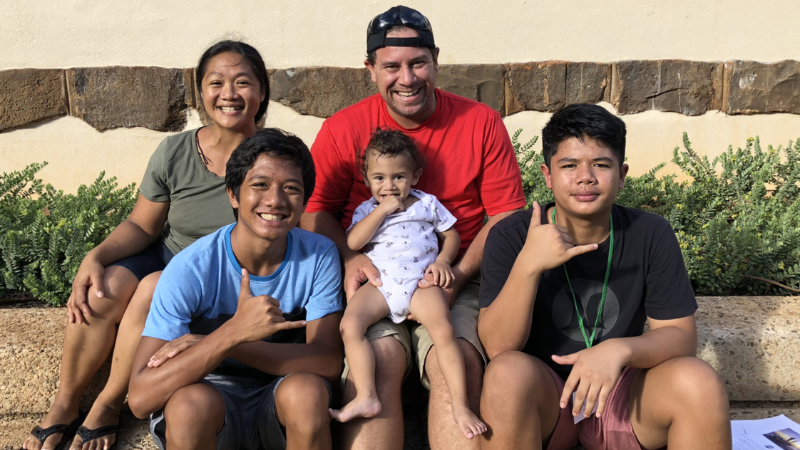 Power of Two helps families in countless ways. Following are just a few of them.
Power of Two helps families in countless ways. Following are just a few of them.
Confidence/Empowerment: Having coaches who understand what it’s like to be a medical advocate for their children gives mentees the confidence they need to advocate for their children.
“Knowing I wasn’t alone gave me hope and helped me feel our struggle was valid. Having this outlet allows me to be a better mom. I’m learning how to be an advocate, how to ask for help and how to take care of myself so I have the capacity to take care of my family. This community has been a lifeline for us,” says Erica Mantel.
Reassurance: Many families feel guilt and stigma around medical interventions that can help their children. This is especially true for those parents who decide to get a G-tube for their children after initially feeling like this would be giving up on eating orally.
“Knowing another family with similar experience helped calm my nerves when I thought a G-tube was wrong for my daughter when it was right,” says Carrie Willmore.
Empathy: Anyone who’s ever been a parent knows it takes a village. Parents of children with PFD are left to navigate a significant part of their experience independently. That’s where Power of Two mentors step in to fill a crucial role.
“We had lots of supportive friends in our lives, but none of them could fully appreciate what we were going through with our daughter,” says Kamila Stanisch. “And, sometimes in their efforts to help and with the best of intentions, they said things that weren’t helpful. It was nice to hear other families tell their stories and meet people who had similarly challenging experiences.”
Community: PFD can be all-consuming, leaving little time for friends. Simple activities, like playdates at the park and lunch with moms and tots, are more complicated.
Kamila Stanisch says, “I was so consumed with trying to ‘out-therapy’ our daughter’s diagnosis that I didn’t feel like I had space to make new friends. As time passed, I realized how beneficial a conversation could be with someone else who was on a similar path. Eventually, I had a couple of mentors and the space they gave me to talk about my frustrations and the laughter we shared over the not-so-helpful things that people sometimes said were healing. It made me a better mom and it also allowed me to be a better friend. For my husband and me, it also opened up space for the hard conversations about our daughter’s future that we had avoided.”
Most importantly, joining the Power of Two program as a mentee or mentor is an opportunity to learn more about how to help children with PFD. “Everything you can read or watch about PFD helps bring a small bit of power back. Feeling that loss of control over being unable to feed your child is debilitating. The Feeding Matters resources helped me so much. When you “meet” this organization, whether it’s online, through a resource, a class, a coach, an employee, or a testimonial, it feels like you are finally meeting someone that is an expert on PFD, and that hope was what got me to where I am today. With a healthy, thriving four-and-a-half-year-old,” says Athena Flicek.
The ultimate testament to the program’s success is how many parents decide to give back as mentors once they move on from needing as much support. As Van der Molen says, “When the program is at its best, the mentee becomes a family coach, ensuring other families are not facing the journey alone.”
If you are a parent needing support, be sure to reach out to learn more about Power of Two. If you’re an experienced parent with a child diagnosed with PFD, we’re always looking for more great mentors. Please consider becoming a family coach. Click here to learn more.